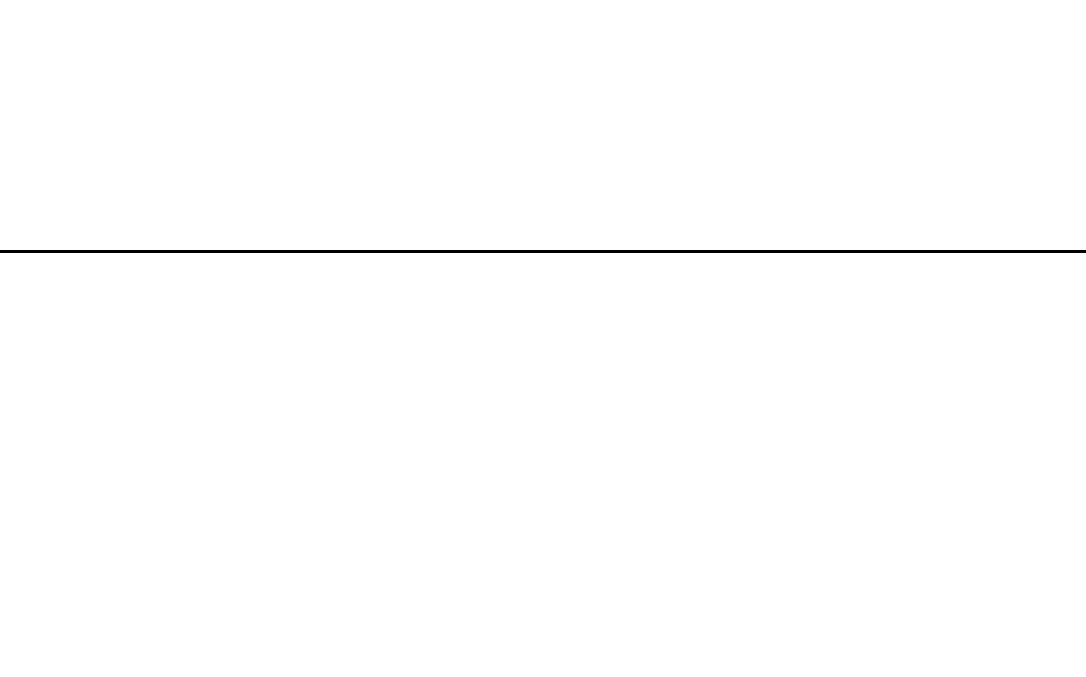
Instructor: April Larremore, Ed. D.
Room:
Office Hours: By appointment
Phone: 817-240-0890
Email: april.larremor[email protected]
EDEC 5470: Constructions of Guidance in Early Childhood Classrooms
Course Description- Explorations of theories of guidance, classroom organization, and
pedagogical consistency that can be used in learning environments for young children and
the diverse perspectives that are represented by those theories. Emphasizes familiarity
with children and their diverse life experiences throughout the early years (birth to 8
years of age) as a foundation for the construction of quality learning environments for
those who are older (ages 5–8 years) in elementary school kindergarten through grade 3
classrooms.
Required Texts
Fields, Marjorie V., Meritt, Patricia A., & Fields, Deborah M. (2014).
Constructive Guidance
and Discipline: Birth to Age Eight
(seventh edition). Pearson, Inc.: Upper Saddle River,
New Jersey
Marion, Marian. (2015).
Guidance of Young Children
(ninth edition). Pearson, Inc.: Upper
Saddle River, New Jersey.
Bullard, Julie. (2017).
Creating Environments for Learning: Birth to Age Eight
. Pearson,
Inc.: Upper Saddle River, New Jersey.
Supplemental Required Readings
Supplemental readings provided by the instructor using online links, electronic copies,
and/or handouts.
Annotated Bibliography
Students will compile an annotated bibliography consisting of 2 texts from 7 of the
identified categories for a total of 14 texts.
- Death
- Divorce
- Sickness and/or hospitalization (self or family members)
- Child abuse
- Neglect

- Harsh parenting
- Not having friends and/or loneliness
- Being bullied
- Family financial hardship
Course Objectives
At the completion of this course, the student should be able to:
• Apply the aspects of a well-designed early childhood classroom and relate the
application to major theorists and early childhood approaches
o Summarize basic elements of schedules, curriculum, activities, and materials in
a developmentally appropriate early childhood setting
▪ Design a classroom based on early childhood theory and guidelines for
developmentally appropriate room design
o Critique theories focusing on the systems in which children develop and
explain how they help teachers design classrooms and guide children
• Promote and create an environment that prevents behavior problems, fosters
positive relationships, and establishes a caring classroom community
o Modify expectations of children in keeping with cultural, socioeconomic, and
gender differences
▪ Discuss how teachers promote children’s agency, perspective taking,
and sense of belonging
▪ Compare how different types of curricula can influence children’s
behavior
o Analyze a child’s pattern of behavior and differentiate between
consequences that teach and those that merely punish
▪ Defend a decision not to use a behaviorist discipline plan
• Develop ways to promote resilience and self-regulation in young children through
curricular and instructional decisions
o Generate developmentally appropriate ways in which teachers can guide
children’s social emotional learning
o Discuss ways to recognize sources of stress and identify strategies that
teachers can use to help children effectively respond to and cope with
stress
▪ Apply strategies for fostering resilience with children who have
experienced adversity in their lives
▪ Demonstrate how teachers can guide children through social problem-
solving situations
▪ Select and critique picture books that promote resilience in young
children
• Give examples of traditional methods that early childhood teachers use in observing
children’s development and behavior

o Question the ways traditional observation discourse acts to privilege and
silence particular understandings of what it is to be a child in an early
childhood setting
o Compare and contrast opposing beliefs on observation, choose a position,
and defend it
Course Calendar
Classes will involve interactive lectures, group work, class discussion, and readings.
January
16 (Face to Face)
Introductions, Syllabus, Course Requirements
23 (Online) Module 1
Supportive Physical Environments: Indirect Guidance
Topic of Study: Apply the aspects of a well-designed early childhood classroom and
relate the application to major theorists and early childhood approaches
READINGS:
Bullard, Julie. (2017). Ch. 1.
Creating Environments for Learning: Birth to Age Eight.
Upper Saddle River, New Jersey: Pearson Education, Inc.
Marion, Marian. (2015). Ch. 2.
Guidance for Young Children
. Upper Saddle River, New
Jersey: Pearson Education, Inc.
MODULE ASSIGNMENT:
Compare and contrast the Montessori, Reggio Emilia, Tools for the Mind, Piaget,
Highscope, and Waldorf approaches. Choose two of the approaches listed. Use
a Venn Diagram to compare and contrast their role in the early childhood
classroom environment.
o What are the characteristics of each approach?
o What are the historical and philosophical foundations for designing learning
environments within the approach?
o What is the role of the teacher in facilitating learning through the
environment?
o What is the role of the student related to the environment?
Use at least 2 book chapters and/or scholarly journal articles to complete the Venn
Diagram. Cite your sources using APA guidelines below the Diagram.

The Module 1 assignment and the Response to Reading Assignments (in Blackboard) are
due on or before 11:59 pm the night before the next face to face class.
30 (Face to Face)
Supportive Physical Environments: Indirect Guidance
Topic of Study: Understanding the importance of the environment and establishing
a context for learning
READINGS:
Bullard, Julie. (2017). Ch. 5.
Creating Environments for Learning: Birth to Age Eight.
Upper Saddle River, New Jersey: Pearson Education, Inc.
Marion, Marian. (2015). Ch. 4.
Guidance for Young Children
. Upper Saddle River, New
Jersey: Pearson Education, Inc.
ASSIGNMENT:
Develop a floor plan for your ideal classroom based on the criteria found in both
chapters. Create a written response to go with your design.
o Use the Environmental Assessment found in Figure 5.7 to assess your floor
plan. Speak to these points in your written response.
▪ Why did you make the choices you made?
▪ Investigate storage options. Describe the types of storage you
would provide and the rationale for why you chose these options.
▪ What is the theoretical foundation for your design? How does the
theory impact your design?
▪ How did you arrange your learning center areas and why?
Use research to support your decisions. Cite your references using APA guidelines.
Your response should be double spaced, 12-point font, and at least one page in length.
This week’s assignment is due on or before 11:59 pm the night before Module 2 begins.
February
6 (Online) Module 2
Supportive Physical Environments: Indirect Guidance
Topic of Study: Understanding the importance of the environment and guiding
children during routines and transitions
READINGS:
Marion, Marian. (2015). Ch. 12.
Guidance for Young Children.
Upper Saddle River, New
Jersey: Pearson Education, Inc.

Bullard, Julie. (2017). Ch. 3.
Creating Environments for Learning: Birth to Age Eight.
Upper Saddle River, New Jersey: Pearson Education, Inc.
Chen, Dora W., Battin-Sacks, Pamela, Prieto, Robert, & Prieto, Colleen. (2008).
When Will
I Be Special? Rethinking Developmentally Appropriate Practice in a Classroom Routine.
Young Children, 63(3), 44-51.
MODULE ASSIGNMENT:
Write your response to the following prompt:
In addition to limiting opportunities for in-depth play, how can assigning children
to centers and rotating them every 15 minutes negatively affect their learning?
Use research to support your answer.
Learn more about thinking routines by visiting the Visible Thinking website. Choose
one of the thinking routines listed and research it further.
o Describe the thinking routine
o What kind of thinking does the routine encourage?
o Tell how you could use it with young children
o What are some tips for using the routine?
o Create a lesson using the routine
o How would you make students’ thinking visible when using this routine?
Your response should be double spaced, 12-point font, and at least two pages in length.
The Module 2 assignment and the Response to Reading Assignments (in Blackboard) are
due on or before 11:59 pm the night before the next face to face class.
13 (Face to Face)
Positive Guidance and Discipline Strategies: Direct Guidance
Topic of Study: Promote and create an environment that prevents behavior
problems, fosters positive relationships, and establishes a caring classroom
community
READINGS:
Fields, Marjorie V., Meritt, Patricia A., Fields, Deborah M. (2104). Ch. 3.
Constructive
Guidance and Discipline: Birth to Age Eight
. Upper Saddle River, New Jersey: Pearson,
Inc.
Marion, Marian. (2015). Ch. 5.
Guidance for Young Children.
Upper Saddle River, New
Jersey: Pearson Education, Inc.
Students are responsible for bringing in one artifact or teaching resource and a
picture book that establishes a caring classroom community.

ASSIGNMENT:
Write a response to “Should I Ignore This Behavior?” on page 157 of the
Guidance
of Young Children
text. Create a table for your response.
o Write out the behavior
o Answer “yes” or “no”
o Provide a short rationale for your choices
Write your response to question #1 under “For Further Thought” on page 270 of the
Constructive Guidance and Discipline
text.
Your response should be double spaced, 12-point font, and at least one page in length.
This week’s assignment is due on or before 11:59 pm the night before Module 3 begins.
20 Online) Module 3
Positive Guidance and Discipline Strategies: Direct Guidance
Topic of Study: Promote and create an environment that prevents behavior
problems, fosters positive relationships, and establishes a caring classroom
community
READINGS:
Marion, Marian. (2015). Ch. 10 & 11.
Guidance for Young Children.
Upper Saddle River,
New Jersey: Pearson Education, Inc.
MODULE ASSIGNMENT:
Create a Padlet board to share strategies for dealing with bullying and other
forms of aggression.
o Create your own Padlet board with a title, description, and posts
o Post a link to your board on the class board titled “Aggression and Bullying”
(use your name to title the board, password “EDEC5470”)
o Your board must include a variety of at least 8 artifacts including, but not
limited to picture and/or chapter books, videos, images, critical discussion
questions, blog posts, journal articles, real world connections, and tips
o The purpose of this assignment is to provide strategies that help ease
children’s anxiety and stress related to aggressive peer behavior and
bullying or that prevent or stop aggressive peer behavior and bullying
o Share each resource and tell how and why you would use it
o Write 2-3 critical questions to go with at least 4 of the artifacts you post
The Module 3 assignment and the Response to Reading Assignments (in Blackboard) are
due on or before 11:59 pm the night before the next face to face class.

27 (Face to Face)
Positive Guidance and Discipline Strategies: Direct Guidance
Topic of Study: Promote and create an environment that prevents behavior
problems, fosters positive relationships, and establishes a caring classroom
community
READINGS:
Lacina, Jan, Stetson, Ranae. (2013).
Using Children’s Literature to Support Positive
Behaviors.
Young Children, 68(5), 34-41.
Students are responsible for bringing in two picture books that support positive
behaviors in young children.
ASSIGNMENT:
Find, read, and review 5 picture books that support positive behaviors in young
children.
o Create your own Padlet board with a title, description, and posts
o Post a link to your board on the class board titled “Positive Behaviors” (use
your name to title the board, password “EDEC5470”)
o Your board must include an image of each book’s cover, a 2-3 sentence
summary of each book, the behavior the book addresses, 2-3 critical thinking
questions you would ask when reading the book, and an activity you would
use the book with to promote positive behavior
o All 5 titles must be different from the books shared in class
This week’s assignment is due on or before 11:59 pm the night before Module 4 begins.
March
6 (Online) Module 4
Positive Guidance and Discipline Strategies: Direct Guidance
Topic of Study: Promote and create an environment that prevents behavior
problems, fosters positive relationships, and establishes a caring classroom
community
READINGS:
Fields, Marjorie V., Meritt, Patricia A., Fields, Deborah M. (2104). Ch. 9 & 10.
Constructive
Guidance and Discipline: Birth to Age Eight.
Upper Saddle River, New Jersey: Pearson,
Inc.
MODULE ASSIGNMENT:

Write a written response to the following prompt: Think about consequences that
teach vs consequences that punish. (Consider the questions and points below when
writing your response.)
o What is the difference between the two?
o Provide classroom examples of both.
o Why are consequences that teach more effective?
o Set up a classroom discipline system based on consequences that teach.
What would this look like in your ideal classroom?
o How does the state of the brain impact how consequences are accepted?
o How does the adult model contribute to a child’s behavior?
Use research to support your answers. Cite your references using APA guidelines.
Your response should be double spaced, 12-point font, and at least two pages in length.
The Module 4 assignment and the Response to Reading Assignments (in Blackboard) are
due on or before 11:59 pm the night before the next face to face class.
13 Spring Break (No Classes)
20 (Face to Face)
Emotional and Social Competence, Resilience, and Stress in Early Childhood
Topic of Study: Develop ways to promote resilience and self-regulation in young
children through curricular and instructional decisions
READINGS:
Marion, Marian. (2015). Ch. 8.
Guidance for Young Children.
Upper Saddle River, New
Jersey: Pearson Education, Inc.
Tominey, Shauna L., O’Bryon, Elizabeth C., Rivers, Susan E., & Shapses, Sharon. (2017).
Teaching Emotional Intelligence in Early Childhood.
Young Children
, 72(1), 6-12.
Students are responsible for bringing in one artifact or teaching resource and a
picture book that teaches emotional intelligence to young children.
ASSIGNMENT:
How would you teach emotional intelligence to young children?
o Create a Padlet board with a title, description, and posts
o Post a link to your board on the class board titled “Emotional Intelligence”
(use your name to title the board, password “EDEC5470”)

o Your board must include a variety of at least 8 artifacts including, but not
limited to picture and/or chapter books, videos, images, critical discussion
questions, blog posts, journal articles, real world connections, and tips
o Write 2-3 critical questions to go with at least 4 of the artifacts you post
o The purpose of this assignment is to provide strategies that develop
young children’s emotional intelligence
o Share each resource and tell how and why you would use it
This week’s assignment is due on or before 11:59 pm the night before Module 5 begins.
27 (Online) Module 5
Emotional and Social Competence, Resilience, and Stress in Early Childhood
Topic of Study: Develop ways to promote resilience and self-regulation in young
children through curricular and instructional decisions
READINGS:
Marion, Marian. (2015). Ch. 9.
Guidance for Young Children
. Upper Saddle River, New
Jersey: Pearson Education, Inc.
Collet, Vicki. (2017). “I Can Do That!” Creating Classrooms That Foster Resilience.
Young
Children
, 72(1), 23-31.
MODULE ASSIGNMENT:
Choose a specific stressor and then prepare yourself to help children deal
effectively with it by completing the following application activities.
o Collect a variety of articles, videos, images, and information about your
chosen stressor. Find at least 5 different informational sources on your
chosen stressor.
o Find and read at least 4 children’s books about the stressor you have chosen.
Give a brief synopsis of each and then explain how you would use it to help
children deal with the specific stressor.
o Write 2-3 critical questions to go with each book you post
o Host the information and children’s books you find on a Padlet board
o Post a link to your board on the class board titled “Stress and Resilience”
(use your name to tile the board, password “EDEC5470”))
Pretend you are being interviewed for a teaching position and the director or principal
says, “I see that you’ve studied about how children deal with _________ (moving, death,
divorce, etc.) How do you see yourself using this information if you’re hired to teach in
this school?”
• Write a written explanation regarding what you know about your chosen stressor
and how you would use the information with the children in your classroom.
Use research to support your answers. Cite your references using APA guidelines.

Your response should be double spaced, 12-point font, and at least one page in length.
The Module 5 assignment and the Response to Reading Assignments (in Blackboard) are
due on or before 11:59 pm the night before the next face to face class.
April
3 (Face to Face)
Emotional and Social Competence, Resilience, and Stress in Early Childhood
Topic of Study: Develop ways to promote resilience and self-regulation in young
children through curricular and instructional decisions
READINGS:
Pawlina, Shelby, & Stanford, Christie. (2011). Shifting Mindsets for Greater R
esiliency
and Better Problem Solving. Young Children,
66(5), 30-35.
Lacina, Jan, Bauml, Michelle, & Taylor, Elizabeth R. (2016). Promoting Resilience
Through Read-Alouds.
Young Children
, 71(2), 16-21.
Students are responsible for bringing in one artifact or teaching resource and a
picture book that develops and promotes resilience in young children.
ASSIGNMENT:
Go to
momentousinstitute.org
and check out the following posts under the “Breath”
category:
o Intro to Breathing
o Balloon Arms
o Belly Breathing
o Why Should We Teach Kids About Breathing?
o Kids Talk: Breathing
Write a written response to share what you learned about breathing, why it is important,
the benefits to it, and how you can use it in the classroom. Included in your response
should be a list of at least 5 resources and activities that incorporate breathing.
Your response should be double spaced, 12-point font, and at least two pages in length.
This week’s assignment is due on or before 11:59 pm the night before Module 6 begins.
10 (Online) Module 6
Emotional and Social Competence, Resilience, and Stress in Early Childhood

Topic of Study: Develop ways to promote resilience and self-regulation in young
children through curricular and instructional decisions
READINGS:
Florez, Ida Rose. (2011). Developing Young Children’s Self-Regulation through Everyday
Experiences.
Young Children
, 66(4), 46-51.
Cooper, Patricia M. (2007). Teaching Young Children Self-Regulation Through Children’s
Books.
Early Childhood Education Journal
, 34(5), 315-322.
MODULE ASSIGNMENT:
How would you teach self-regulation to young children?
o Create a Padlet board with a title, description, and posts
o Post a link to your board on the class board titled “Self-regulation” (use
your name to title the board, password “EDEC5470”)
o Your board must include a variety of at least 8 artifacts including, but not
limited to picture and/or chapter books, videos, images, critical discussion
questions, blog posts, journal articles, real world connections, and tips
o Write 2-3 critical questions to go with at least 4 of the artifacts you post
o The purpose of this assignment is to provide strategies that develop
young children’s self-regulation skills
o Share each resource and tell how and why you would use it
The Module 6 assignment and the Response to Reading Assignments (in Blackboard) are
due on or before 11:59 pm the night before the next face to face class.
17 (Face to Face)
Using Observation in Guiding Children
Topic of Study: Give examples of traditional methods that early childhood teachers
use in observing children’s development and behavior
READINGS:
Marion, Marian. (2015). Ch. 6.
Guidance for Young Children
. Upper Saddle River, New
Jersey: Pearson Education, Inc.
Reifel, Stuart. (2011). Observation and Early Childhood Teaching: Evolving Fundamentals.
Young Children
, 66(2), 62-65.
ASSIGNMENT:
Write your response to questions 1 & 2 on page 180 of the
Guidance of Young
Children
text.
o Write out the question
o Choose your answer

o Provide a short rationale for your choices
o Use research to support your answers
Your response should be double spaced, 12-point font, and at least one page in length.
This week’s assignment is due on or before 11:59 pm the night before Module 7 begins.
24 (Online) Module 7
Using Observation in Guiding Children
Topic of Study: Question the ways traditional observation discourse acts to
privilege and silence particular understandings of what it is to be a child in an early
childhood setting
READINGS:
Foucault, Michael. (1995). Pages 170-177.
Discipline and Punish: The Birth of the Prison.
New York, New York: Random House, Inc.
Grieshaber, Susan, & Cannella, Gaile S. (2001). Ch. 6.
Embracing Identities in Early
Childhood Education: Diversity and Possibilities.
New York, New York: Teachers College
Press.
Blaise, Mindy. (2005). Ch. 2.
Playing it Straight: Uncovering Gender Discourses in the
Early Childhood Classroom.
New York, New York: Routledge.
MODULE ASSIGNMENT:
Think about what you’ve read over the last two weeks regarding the observation of
young children. Compare and contrast the two viewpoints. Use a Venn Diagram to
compare and contrast the way observation is viewed from both perspectives.
What are your personal thoughts on observing young children? Create a written
response to share your personal beliefs regarding observation. Use research to
support your opinion. Your response should be double spaced, 12-point font, and
at least one page in length.
The Module 7 assignment and the Response to Reading Assignments (in Blackboard) are
due on or before 11:59 pm the night before the next face to face class.
May
1 (Face to Face)
DUE - Annotated Bibliography
Requirements:

1. In-Class Participation (8 points)
(a) attendance, (b) demonstrates knowledge of reading content by displaying an in-depth
understanding during class discussions, and (c) brings the books, articles, and/or
resources requested for specific face to face classes
3 points will be deducted each time a student comes to class not prepared for discussion,
without the requested books, articles, or resources, and/or for not participating in class.
2. Face to Face Weekly Assignments (25 points)
(a) demonstrates knowledge of readings and class content by displaying an in-depth
understanding through posts and assignment submissions, and (b) the on-time completion
of face to face weekly assignments
Points will be deducted for each missing, incomplete, or late posting. A posting is
considered late if submitted after 11:59 pm on the night before the next online module
starts.
3. Online Participation (42 points)
(a) demonstrates knowledge of reading content by displaying an in depth understanding
during online discussions, posts, and assignments, and (b) the on-time completion of online
assignments
Module and reading response assignments are worth two points each – for a total of 6
points per module. Points will be deducted for each missing, incomplete, or late posting. A
posting is considered late if submitted after 11:59 pm on the night before the next face to
face class.
4. Annotated Bibliography (25 points)
Create an annotated bibliography with a list of citations for picture books that address
specific stressors that impact young children. Each citation should be followed by a
summary and evaluation of the book. The purpose of the annotation is to inform the
reader of the relevance, accuracy, and quality of the books cited.
• Locate picture books that contain useful information and ideas on the following
stressors (death, divorce, sickness and/or hospitalization, child abuse, neglect, harsh
parenting, not having friends and/or loneliness, being bullied, family financial hardship).
• Briefly examine and review the picture books.
• Choose 2 picture books from 8 of the identified categories for a total of 16 books.
• Cite the picture book using APA style.

• Write a concise annotation that summarizes the central theme and scope of the
book.
Your annotations should include the following information:
(a) Summarize: Write a brief synopsis of the book. What is the intended age of the
audience? What stressor is covered?
(b) Assess: After summarizing the book, evaluate it. Is it a good book to use with
young children? How does it compare with other books in your bibliography? Is the
information reliable and helpful for young children? Is this book biased or objective?
What is the purpose of reading this book?
(c) Instruct: Provide suggestions for instructional use in the classroom. List key
vocabulary words to teach. Write 2-3 open-ended questions that prompt higher
order thinking and conversation related to dealing with and understanding the
stressor.
(d) Reflect: Once you've summarized and assessed the book, you need to think about
how it fits into this course. Was this book helpful to you? How did it shape your
thinking? How would you use this book with young children? Did it change how you
think about how this stressor impacts young children or how they deal with it?
Base Grading Scale
90-100 A
80-89 B
70-79 C
60-69 D
0-59 F
Please read this syllabus and all material on Blackboard carefully, so you are familiar with
class expectations. Weekly reading assignments should be read before coming to class
on the scheduled day. Course readings and assignments for online weeks must be
completed by 11:59 pm the night before the next face to face class.
Attendance Policy: This course is a blended course, so we will only meet face to face 8
times during the semester. You are allowed 1 absence with no penalty. Absences are
neither excused or unexcused. Arriving late or leaving early may result in an absence if it
occurs more than once. 20 points will be deducted from your final course grade on your
second absence. On your third absence you will either be automatically dropped or

receive an F in the class. Consult the UNT academic calendar and Office of the Registrar
for information on dropping a course.
Policies in the UNT undergraduate catalog regarding the Code of Student Conduct
Discipline will be followed. This course syllabus is intended to be a guide and may be
amended at any time by the instructor.
